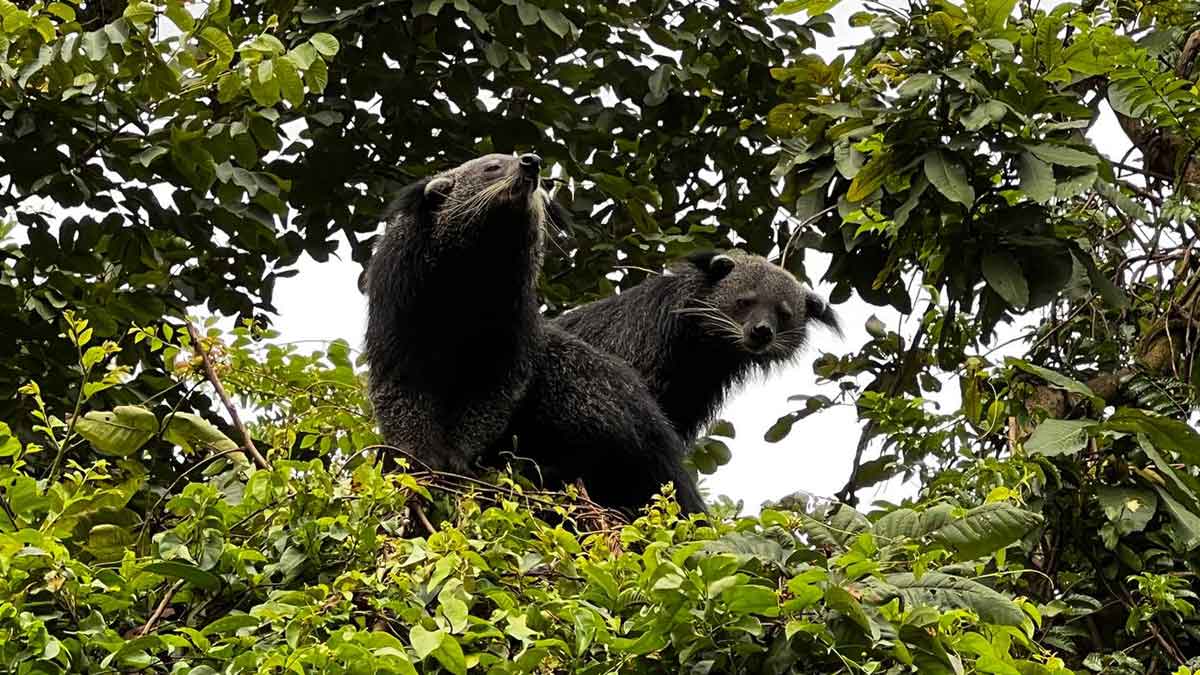Also known as bearcats (and affectionately called bintys), they are curious animals that belong to the civet family, are mostly nocturnal, and can live as long as 18 years! They spend most of their time in trees, climbing with the help of their large claws and fully prehensile tails. They are classified as Vulnerable on the IUCN Red List and have become increasingly rare in Cambodia.
Also known as bearcats (and affectionately called bintys), they are curious animals that belong to the civet family, are mostly nocturnal, and can live as long as 18 years! They spend most of their time in trees, climbing with the help of their large claws and fully prehensile tails. They are classified as Vulnerable on the IUCN Red List and have become increasingly rare in Cambodia.

Meet Phnom and Toy
Phnom and Toy are beautiful animals called binturongs, which are also affectionately called bintys or bear cats. They are found throughout the forests of Southeast Asia. These unique creatures have a very distinctive smell that they mark their territory with which smells like buttered popcorn!

Meet Phnom and Toy
Phnom and Toy are beautiful animals called binturongs, which are also affectionately called bintys or bear cats. They are found throughout the forests of Southeast Asia. These unique creatures have a very distinctive smell that they mark their territory with which smells like buttered popcorn!
Every sponsorship will receive an online printable packet.
This e-packet saves us money on printing and postage so everya dollar you donate goes directly to the animals.
*If you’d like to put the sponsorship in another person’s name, please put their details in the “Additional comments” section below.
